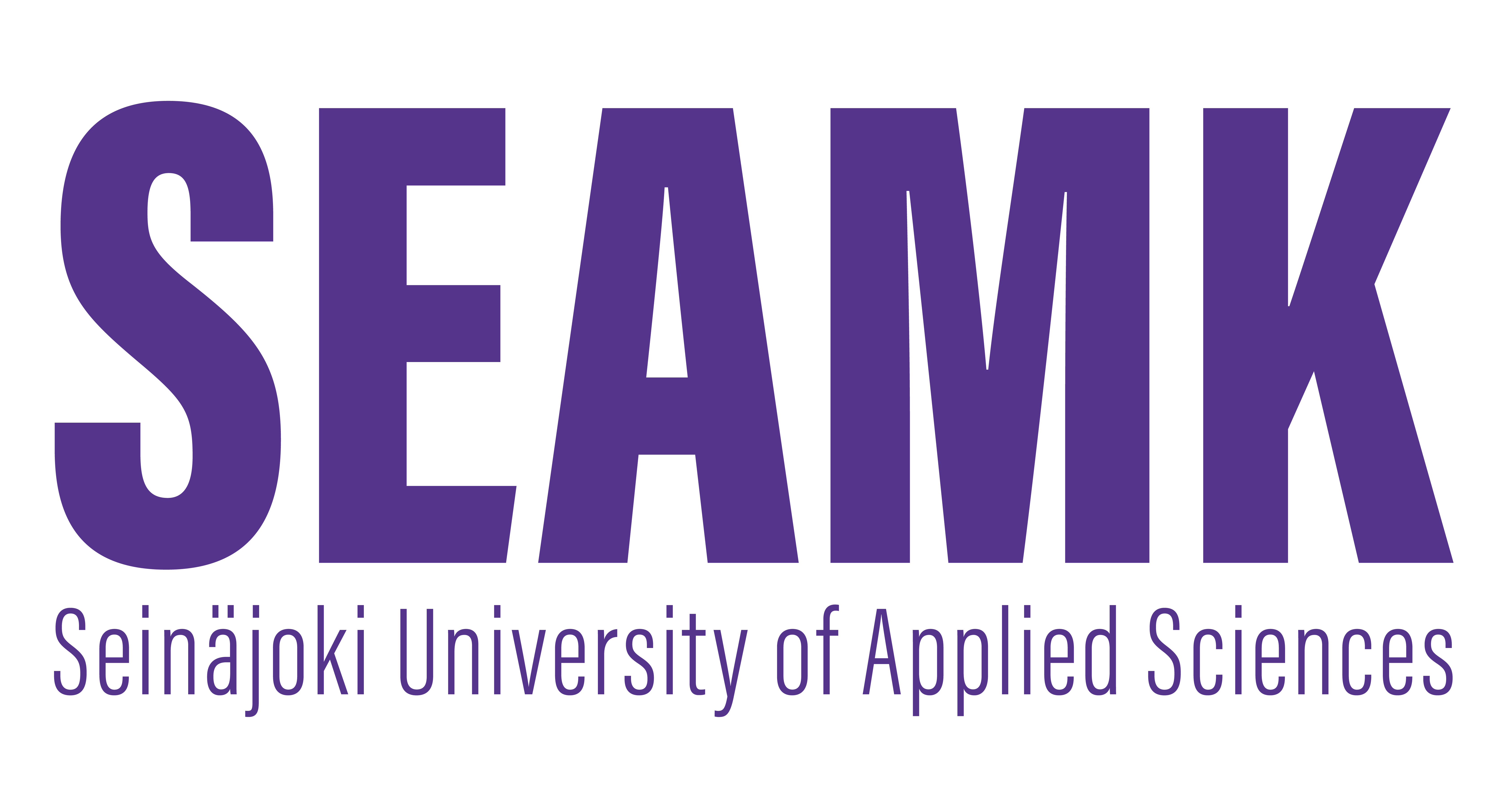Entrepreneurship in the Social and Health Sector (3cr)
Code: XX00DJ02-3017
General information
- Enrollment
- 22.04.2025 - 31.12.2025
- Registration for the implementation has begun.
- Timing
- 05.01.2026 - 19.04.2026
- The implementation has not yet started.
- Number of ECTS credits allocated
- 3 cr
- Local portion
- 1 cr
- Virtual portion
- 2 cr
- Mode of delivery
- Blended learning
- Unit
- SeAMK Nursing and Public Health Nursing
- Campus
- SeAMK Seinäjoki, Kampustalo
- Teaching languages
- Finnish
- Degree programmes
- Bachelor of Health Care, Physiotherapy
- Bachelor of Social Services and Health Care, Applied Gerontology
- Bachelor of Health Care, Nursing
- Bachelor of Social Services
- Degree Programme in Public Health Nursing
- Teachers
- Anna Rauha
- Groups
-
MSH25KBachelor of Health Care, Nursing, Multimodal implementation
- Course
- XX00DJ02
Evaluation scale
1-5
Objective
The student
- is able to outline the entrepreneurial competences and to reflect on their own goals and strengths in relation to them.
- is able to describe and consider social, cultural and economic value and to perceive their differences.
- is able to analyze different value chains and networks.
- is able to describe the importance of entrepreneurship for society and national economy as well as to recognize different manifestations of entrepreneurship in everyday life.
- is able to describe the preconditions for profitable business activity.
- knows the stages of the establishment of a company.
- identifies the special features and opportunities of entrepreneurship in the social and health sector.
- knows the entrepreneurship opportunities at SEAMK.
Content
- Entrepreneurial competence, self-knowledge and self-efficacy, entrepreneurship as part of life.
- Value creation, recognition of value chains and networks in different environments, value creation in different structures, such as companies and associations.
- Basic concepts of entrepreneurship and business and earnings logic, economic literacy, risk management.
- Stages of the establishment of business activities.
- Business plan as a tool for structuring a business idea.
- Special features of business activities in social and health care as part of society, legislation.
- Deepening of the student’s entrepreneurial skills at SEAMK (SEAMK Yritystalli, SEAMKPro, SeiES, etc.)
Materials
Learning material in Moodle
Teaching methods
Visit to Y-zone, otherwise time- and place-independent studying in Moodle. Includes independent and group assignments
Student workload
78 hours of independent study.
The course involves taking part in online discussions and completing written assignments, which will be assessed.
2 hour visit to Y-Zone.
Assessment criteria, satisfactory (1)
The student:
- is able to take responsibility for his/ her tasks.
- is able to describe and reflect on entrepreneurship and business activity.
- is familiar with the business information base and the content of responsibility in social and health care.
Assessment criteria, good (3)
In addition to the previous one, the student can
- evaluate his / her own opportunities to act as an entrepreneur.
- evaluate business opportunities and how to become an entrepreneur.
- identify and describe their own networks in social- and health care.
- well describe the business information base and the connections of responsibility to business.
Assessment criteria, excellent (5)
In addition to the previous one, the student can:
- evaluate the challenges and opportunities of entrepreneurship.
- analyze and evaluate business opportunities, strategic choices and business models.
Assessment criteria, approved/failed
Failed
The course is failed if the student has not completed the course tasks to an acceptable level. The student incompletely describes the creation of social, cultural and economic value, and does not recognize their importance in business and society. The student does not recognize the basic concepts of business, and cannot describe the prerequisites for a profitable business. The student does not describe his/ her own relationship with entrepreneurship and entrepreneurial competence.
